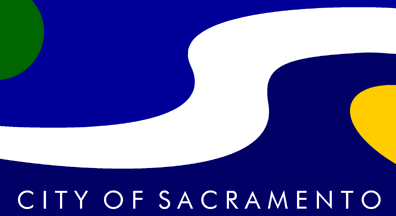

WHEN
Year discovered/founded and incorporated:
Sacramento: 1839 and was incorporated in 1850
The city was named after the Sacramento River, which forms its western border. The river was named by Spanish cavalry officer Gabriel Moraga for the Santisimo Sacramento (Most Holy Sacrament), referring to the Catholic Eucharist.
WHERE
Where in California is it located?
Sacramento, city, capital of California, U.S., and seat (1850) of Sacramento county, in the north-central part of the state.
Who were the original tribal land inhabitants on which it was built?
Tribes such as the Miwok, Yahi, Patwin and Maidu originally inhabited the area.
WHO
Who were the historical people that discovered/established this city and where were they from?
1839 John Sutter, a German-born Swiss pioneer settler and colonizer, arrived on the shore near the confluence of the American and Sacramento River. Sutter’s Fort was established with the intent to develop an agricultural community, and the settlement began attracting businessmen looking for opportunities. When gold was discovered in the nearby foothills at a sawmill in 1848, the proximity to the river transformed the Sutter’s Fort community into a trading and mining epicenter of what was later called the ‘Gold Rush’.
HOW
How did the city come together?
In the 1770s the valley was visited by Spanish explorer Pedro Fages, who named the river for the Christian religious sacraments. John Sutter established the colony of Nueva Helvetia (New Switzerland) in 1839 on the site, a Mexican land grant, and beginning in 1840 built a palisaded trading post known as Sutter’s Fort.
How did the city of Sacramento change the shape and impact the State of California?
It is a cultural and financial center of the western United States and one of the country’s most cosmopolitan cities. It is still a great port, the financial and administrative capital of the West, and a substantial center for commerce and manufacturing. It is the home to a number of smaller technology companies and start-ups. Another large portion of the city’s employed work in the area of finance. Other leading areas of employment include business services (personnel supply, building maintenance, security, computers and data processing, and advertising), retail trade, the tourist and convention industry, and professional services. Many companies, such as Levi Strauss & Co., producer of one of San Francisco’s most famous products, blue jeans, have located their national headquarters in the Bay Area. Tourism is a major source of income. The bridges, Coit Tower, the museums, the restaurants, Chinatown, North Beach, the Victorian mansions, crooked Lombard Street, and the dazzling Fairmont Hotel are major attractions; Fisherman’s Wharf, however, is the most popular.
WHAT
What did I see on my travels to this city?
I've visited Old town Sacramento. The area resembled more of a cowboy town in the old west. It had a collection of saloons, shops, museums, and stores, all with a facade from an older era. I have been to a School House Museum. It was a living replica of the traditional one room schoolhouse from early days of education. The teacher used a chalkboard to write on while the students used a slate. We also too an excursion train ride that was operated by the California State Railroad Museum. It was a vintage diesel locomotive.
What are some Historical landmarks located in this city?
Sutter Fort State Historic Park, the Crest Theater, the Tower Bridge.
What are some of the fun facts about this city?
-
Sacramento is home to the original Pony Express. This expansive mail delivery service originated in Sacramento and stretched all the way to Missouri.
-
“City of Trees” is one of Sacramento’s nicknames as city has the most trees per capita of any other city in the world.
-
In 2012, Sacramento started the marketing campaign as “America’s Farm-to-Fork Capital” due to Sacramento’s many restaurants that source their food from the numerous surrounding farms.
Sources
Encyclopedia Britannica, Inc. (2020, March). Sacramento. Retrieved from https://www.britannica.com/place/Sacramento-California
SNAHC. (Accessed May 2020). Our Community. Retrieved from https://www.snahc.org/our-community/
City of Sacramento. (Accessed May 2020). History. Retrieved from https://www.cityofsacramento.org/Fire/About/History












